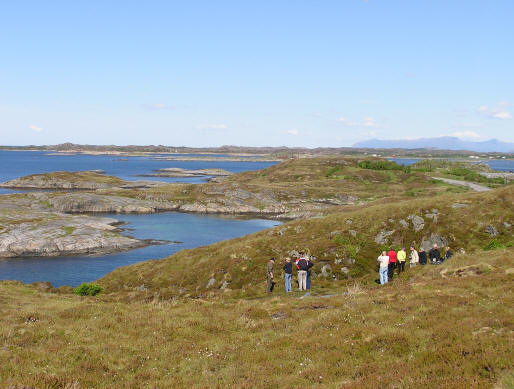Best Time to Visit Atlantic Road: Complete Seasonal Guide

🌞 Summer Season (June - August): Peak Experience
Why Visit: Warmest weather, longest daylight hours, and best road conditions make summer the most popular time. The midnight sun phenomenon provides incredible photography opportunities with golden hour lighting lasting for hours.
Summer visitors should review our Photography Guide for tips on making the most of extended daylight hours and our Complete Planning Guide for detailed itinerary suggestions.
Weather Details:
- Average temperature: 12-15°C (54-59°F)
- Daylight hours: Up to 20 hours in midsummer
- Rainfall: 8-12 rainy days per month
- Wind conditions: Moderate, typically 10-15 mph
🍂 Autumn (September - November): Dramatic Weather
Why Visit: Autumn offers the most dramatic weather conditions with powerful storms creating spectacular wave action. This is the season for serious storm watchers and photographers seeking dramatic seascapes.
For comprehensive storm watching guidelines and safety protocols, see our Storm Watching Guide which covers optimal viewing locations and weather monitoring techniques.
⚠️ Safety Warning: This is when waves most frequently wash over the bridges. Monitor weather warnings carefully and never leave your vehicle during storm conditions. The Norwegian Meteorological Institute provides real-time alerts. Detailed safety protocols are available in our Atlantic Road Safety Guide.
❄️ Winter (December - February): Arctic Beauty
Why Visit: Snow-covered bridges create stunning winter wonderland scenes. This is also the season for potential Northern Lights viewing, though cloud cover is frequent due to the coastal location.
Driving Conditions: Winter tires are mandatory, and road conditions can be challenging. Check road conditions with Norwegian Public Roads Administration before traveling.
🌱 Spring (March - May): Awakening Coast
Why Visit: Spring offers a balance of reasonable weather and fewer crowds. Excellent time for photography with dramatic cloud formations and rapidly changing light conditions.
📅 Month-by-Month Breakdown
July: Peak season - warmest weather (15°C), most crowded, best road conditions.
September: Dramatic autumn light, increasing storm frequency, fewer crowds.
December-February: Winter landscapes, potential Northern Lights, harsh conditions.
May: Spring conditions, daylight extending, good value for accommodations.
🧥 Essential Packing for Any Season
The Atlantic Road's exposed coastal location means weather can change rapidly. Always pack waterproof clothing, warm layers, and sturdy waterproof footwear. Even in summer, temperatures can drop quickly and rain is frequent.
💡 Insider Tip: Check live weather conditions at yr.no (Norwegian Meteorological Institute) before your visit. The "precipitation radar" feature shows approaching storms in real-time.
🎯 Choosing Your Perfect Atlantic Road Season
Best for First-Time Visitors: July offers the most reliable weather and optimal conditions for experiencing the Atlantic Road safely. The combination of warm temperatures, extended daylight, and calm seas provides ideal conditions for photography and sightseeing.
Best for Photography Enthusiasts: September delivers the most dramatic lighting and weather conditions. The interplay of storm clouds, golden autumn light, and powerful waves creates spectacular photo opportunities, though weather conditions require careful monitoring.
Best for Budget Travelers: May and early June offer excellent value with reasonable weather, emerging spring conditions, and significantly lower accommodation prices compared to peak summer rates.
Best for Storm Watching: October through February provides the most powerful storm systems, with waves regularly washing over the bridges. However, this requires serious weather preparation and flexible scheduling.
🌡️ Detailed Weather Planning
Temperature Variations: Summer temperatures rarely exceed 20°C (68°F), while winter temperatures typically remain around 0-5°C (32-41°F). The maritime climate moderates temperature extremes, but wind chill can make conditions feel significantly colder.
Wind Considerations: Coastal winds are constant throughout the year, with winter storms generating gusts exceeding 60 mph. Summer winds typically range 10-20 mph, still requiring secure cameras and stable footing during photography.
Daylight Hours: Midsummer provides nearly 20 hours of daylight, including extended golden hour conditions perfect for photography. Winter daylight lasts only 4-6 hours, but the low sun angle creates dramatic lighting when skies clear.
🏨 Accommodation and Booking Considerations
Peak Season Booking: Reserve accommodations 3-6 months in advance for July visits, especially unique options like Håholmen island hotel. Summer demand significantly exceeds available accommodation near the Atlantic Road.
Shoulder Season Advantages: May and September offer much easier booking, often with same-day availability and rates 30-50% lower than peak summer pricing. However, verify that seasonal restaurants and attractions have opened or not yet closed.
Winter Considerations: Some accommodations close entirely during winter months, while others offer reduced services. However, winter visitors gain access to cozy fireside experiences and potential Northern Lights viewing that summer visitors cannot experience.
🚗 Seasonal Transportation Differences
Summer Transportation: All transportation options operate at full capacity, including ferry services, bus connections, and rental car availability. Road conditions are optimal for all vehicle types.
Winter Transportation: Ferry schedules may be reduced due to weather, and some rural bus services operate with limited frequency. Winter tires or 4WD vehicles are strongly recommended, and rental car availability may be more limited.
The best time to visit Atlantic Road Norway ultimately depends on your priorities: summer for reliability and comfort, autumn for drama and photography, winter for unique Arctic experiences, or spring for value and emerging beauty. Each season offers distinct advantages for different types of travelers and interests.